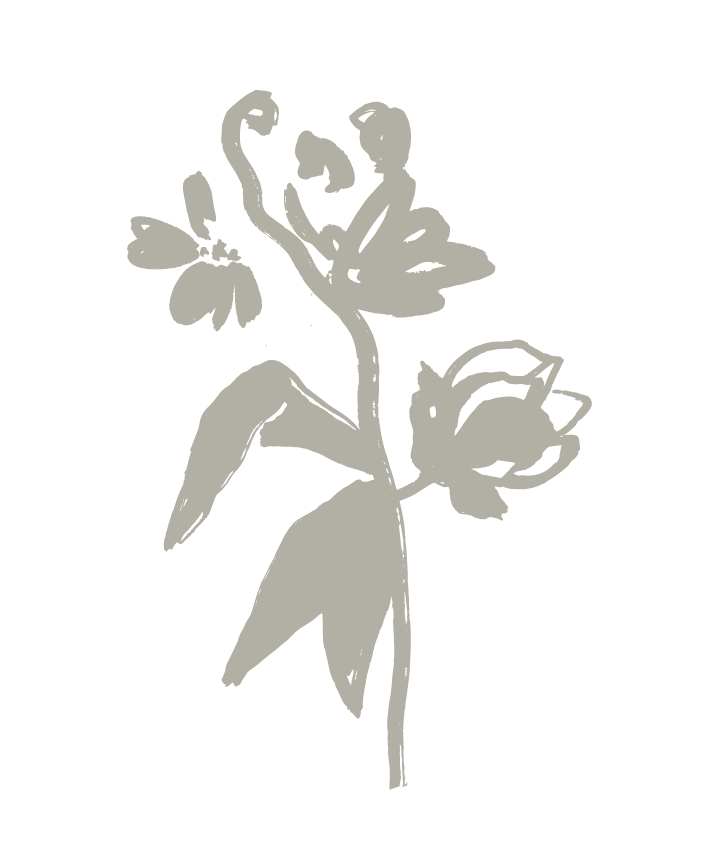Slowing Down in a Speedy Society: My Personal Tools
Recently, my good friend, Amelia, and I went live on Instagram to talk about the concept of slowing down in a world that begins to speed up again.
We chatted about our “thinky” society, and the fact that, we, as humans, tend to overanalyze pretty much everything (i.e., we struggle to quiet our minds). We heavily rely on our neocortex, the rational, analytical, logical part of the brain. The size of our neocortex is what separates us from other mammals — it gives us an enhanced ability to problem-solve and discern probability based on past experiences and build future expectations.
You’ve heard of the concept of “fear-based thinking” or “survival mode” — aha, that’s the neocortex! Quite literally, we used this part of the brain to survive by running and hiding from predators. Now, though, we don’t fear lions or tigers; instead, we fear other contexts surrounding us (mostly social contexts, like our work environment, relationships, social and political groups, etc.). We overanalyze what “that text message meant” or “whether this dress makes me look my best.” Truly, silly things like that can literally take over our analytical minds.
We overanalyze ourselves, and we overanalyze how others might view us.
All of this is to say: we do a great job thinking, but often, we don’t do a great job feeling. We overlook our emotional bodies, our gut feelings, our intuitions. We lose connection with ourselves, and in result, we lose connection with others (because really: how can you be close to another when you are far from yourself?).
Our intuition is much smarter than we give it credit for — as Einstein said, it is a “sacred gift.” But how can we possibly tune into this sacred gift when we are busy looking outside and using what we’ve learned from others to guide us?
Perhaps we need less distractions, less information. Perhaps we need to slow down and sit with our own energy. Perhaps we need to think less about what’s outside of us, and feel more of what’s within us.
Below are some of my personal tools I use to slow down, and ultimately, find deeper connection to my intuition. I hope you find these tools helpful too.
CARE FOR YOUR GUT
Giving a new meaning to “listen to your gut” — studies show that gut health plays an impact on our mental health, decreasing the likelihood of anxiety and depression. I take my Seed synbiotic every morning and eat lots of gut-loving foods (think plants and fermented foods).
SIT IN SILENCE
Usually, this is the first thing I do in the morning (with my coffee) without technology, and preferably, no other humans. Sitting with your own energy can be healing. Take a moment to do a body scan, feeling where tension might exist inside your body. Be honest with yourself, and refrain from judgment. You are safe with whatever it is you feel — mentally, emotionally, physically.
MEDITATION or BREATH WORK
If you’re new to meditation, I recommend the Headspace or Calm app. Otherwise, square-breathing is wonderful — simply inhale through your nose for 6 seconds, hold your breath for 2 seconds, and exhale for 6 seconds (6-2-6).
JOURNALING
Journaling is therapy. Although a journal doesn’t speak or ask you questions, it does have this magical power of exposing yourself to yourself. If that makes sense. I use a Rhodia journal for long-form writing, but if long-form isn’t your gig, perhaps try The Five Minute Journal for more simple structure.
MOVE (CONNECT to) YOUR BODY
Even if it’s just stretching, connect to your body daily. Take note of how movement feels for your body. Sometimes, excruciating workouts can hold havoc on the body and build more cortisol (a stress hormone). Some days you may have more energy for a challenging workout, but other days, you might need something more gentle like yoga or walking. Honor your body’s needs.
FOOD IS MEDICINE
Remove distractions when you cook and sit with your food. Chew food slowly, bite-by-bite, and take note of how that food moves throughout your body. Does your food feel nourishing, or empty? How does it sit in your stomach, or pass through your system? Consider where your food came from — was it harvested, butchered, or manufactured? Did is need sunshine and water to grow? Begin to view your food as sacred energy and vitamins, and suddenly, you’ll begin to crave foods that feed both your body and soul.
GET IN NATURE
Our first (and truest home) is the earth. It is what we stemmed from. The sun is literally our source of life; without it, nearly all living things would die. Without the water and air, we would perish. Sit in the earth’s abundance and find gratitude for what we often overlook while sitting between closed walls.
SOCIAL MEDIA BOUNDARIES
Talk about noise and information and excess — we all need a break. I wrote a blog that shares my personal social media boundaries. Perhaps you’ll find some of my tools useful.
MICRO FUTURE PLANNING
I say “micro” because I’ve learned that, by planning small, I find it easier to be more present and win the day, as opposed to planning broad schemes for an unknown future. Consider small steps a win. No one wins a marathon without first running one mile. As a to-do list lover, I’ll usually put 2-3 mini wins for the day ahead and a miscellaneous to-do on the side (not committed to any day).
TRUST YOURSELF
You have all your answers within you. Practice choosing your internal signal over the external noise.
To learn more about the brain (and neocortex) and meditation benefits, I highly recommend following Joe Dispenza or watching his latest series call Rewired.

